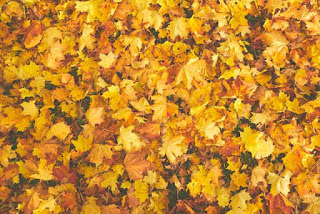Tired of expense and labor?
Are you tired of the expense and labor of bagging leaves and hauling them to the curb? Do burning restrictions prevent you from dispatching them into the air to cause the crisis du jour? Use your lawn mower to chop your leaves into teeny-tiny pieces, and leave them there. The particles will eventually settle into the grass and compost themselves. It's the easiest way to prepare your yard for the winter and feed it, too.How to do it
There are a couple of ways to go about it. It begins with a good lawn mower. You can use a “mulching mower” that has no side-discharge port, or a mower fitted with a “high-lift” mulching blade and a side-discharge plug. (I prefer the later; it leaves more options.) The plug keeps the chopped leaves and grass blades under the mower deck for further chopping. For best results, mow the length of the lawn, then mow a second time across the width of the space. For this to work properly, the grass must be relatively short – no more than 3 inches – and dry. The leaves may be moist, but not wet. If wet, the particles will stick to the underside of the deck, clogging up the works. Crank up the engine to high, and let ‘er rip.The other way is to mow the lawn with your side-discharge mower, fitted with a mulching blade, in a pattern that will allow you to re-cut the discharged particles from the previous pass. Mowing in concentric circles can be very effective. This is a better method if your grass is longer, or the lawn is a little too wet. (Keep in mind, however, that mowing wet grass is never a good idea.) Just keep mowing until the leaves have all but disappeared.
About that mower
Here are my personal thoughts about the mower. It matters not whether you have a riding mower or a push-mower. The principles are the same. If you only need a small mower, I suggest using a lightweight machine with a 22-inch deck, and without the self-propelling mechanism. Self-propelling mowers are heavier and have more parts to break, so are more expensive to maintain. I’d rather have a lightweight mower with the power of a Chevy V-8, but that’s not possible.Self-propelled mowers can be useful, though, particularly if the lawn is sloped, or your physical ability prevents you from pushing. I recommend those with rear-wheel drives. Honda and Kohler engines are my favorites.
When you've finished
When you’ve finished mowing, apply a “winter-blend” fertilizer. It should have a chemical analysis like 24-3-12, 32-0-10, or 26-2-12. The numbers indicate the parts of nitrogen, phosphorus and potassium, in that order. It’s important that the potassium content is high, for it promotes winter-hardiness and root growth.Want more to do?
You can bag your clippings and haul them off, but that defeats the purpose of mulching the leaves. But, if you insist, put them in your compost pile. You can also apply them as a thick mulch in your vegetable garden to prevent weeds. So long as your lawn isn’t full of weeds to begin with, the thick mulch shouldn’t add to your garden’s weed problem.Bagging works best when the grass is of normal height and dry. Dump the clippings onto a small tarp and drag them off to your preferred location.
Return to GoGardenNow.com.






No comments:
Post a Comment